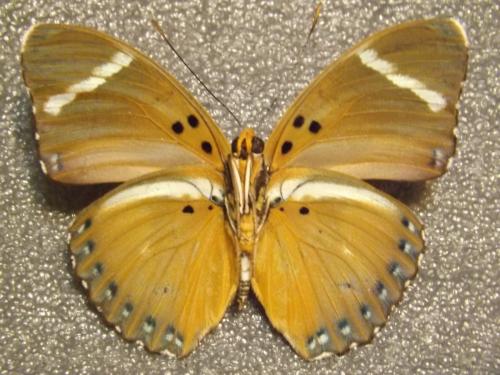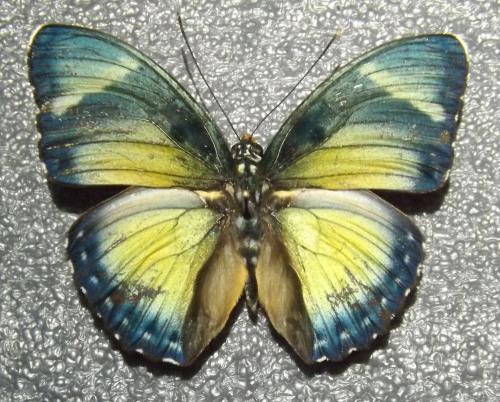kristof56
Junior Member
 
Posts: 24
Country: FRANCE
|
Post by kristof56 on Jan 29, 2020 10:22:51 GMT -8
Hello, I have a hundred Euphaedra from Cameroon to prepare a genre deemed difficult, some I have been able to identify but this one not. Possible candidates that I was able to identify: Euphaedra (Euphaedrana) vicina Hecq, 1984 Euphaedra (Euphaedrana) preussi Staudinger, 1891 Euphaedra (Euphaedrana) fulvofasciata Hecq, 1984   C.Le Pogam : Cameroun : NKOLMETET :Village Mengueme Bané : 01/11/2019 Thanks for your help. kristof  |
|
|
|
Post by lordpandarus on Jan 30, 2020 20:03:53 GMT -8
I think Euphaedra preussi
|
|
kristof56
Junior Member
 
Posts: 24
Country: FRANCE
|
Post by kristof56 on Feb 1, 2020 5:20:35 GMT -8
Yes,thank you  |
|
|
|
Post by valleysboyo on Apr 14, 2020 17:54:49 GMT -8
Hi again Kristof56,
apologies for delay on this one.
The very prominent light spotting on the thorax and abdomen of this M is interesting and, I think, characteristic.
Of the possible species, we can rule out albofasciata and disjuncta fairly easily, as these are both quite characteristic species, and as far as I'm aware do not occur in Cameroon. This leaves us with the following:
In preussi, there is very little pale spotting apparent on the body, the subapical band is usually wider than on this specimen, and the hw recto black border narrows noticeably towards the anal angle.
In vicina, the pale pale spotting on the thorax and abdomen is a little more prominent but still slight, and vicina apparently has very little submarginal spotting in the hindwing border on the upperside; sometimes the border is hardly present being covered by the greenish sheen.
Your specimen also has quite a rounded hindwing which is not so pointed at the anal angle - this does not seem right for preussi or vicina.
With fulvofasciata, the subapical band is yellow and very clearly defined on the upperside - the subapical band on your specimen is not yellow but whitish, and seems partially overlaid and obscured by the greenish apical sheen. Also, all of the definite fulvofasciata specimens that I have seen have just 2 small pale spots apparent on the thorax, one each side at the front just behind the head.
fascinata is a possible, and does have the very prominent light spotting on the thorax and abdomen. However, Hecq says that the hw recto submarginal spotting is very prominent, and only becomes weaker in the east of the species range (eastern DRC) - certainly, all the specimens of fascianta that I have from Cameroon and CAR have very prominent hw recto submarginal spotting.
That just leaves us with ochrovirens. This species has the very prominent light spotting on the thorax and abdomen, and according to Hecq can be yellow ochre to white, or even greenish, sometimes bicoloured, the apex of a green colour, sometimes extending to the whole of the forewing, and the subapical band white, rather narrow, tending to obsolescence. Your specimen also has a slightly more rounded hindwing shape, with the hw recto submarginal band of even width with small bluish points rather than large spots.
I'm inclined to think, therefore, that this is ochrovirens, and in fact, your specimen looks very close to the M shown on Pl. XXXIX (14) of Hecq's monograph (1997), though yours has a less prominent subapical band.
I'd be interested to know what you and others think?
|
|
kristof56
Junior Member
 
Posts: 24
Country: FRANCE
|
Post by kristof56 on May 10, 2020 2:06:37 GMT -8
|
|